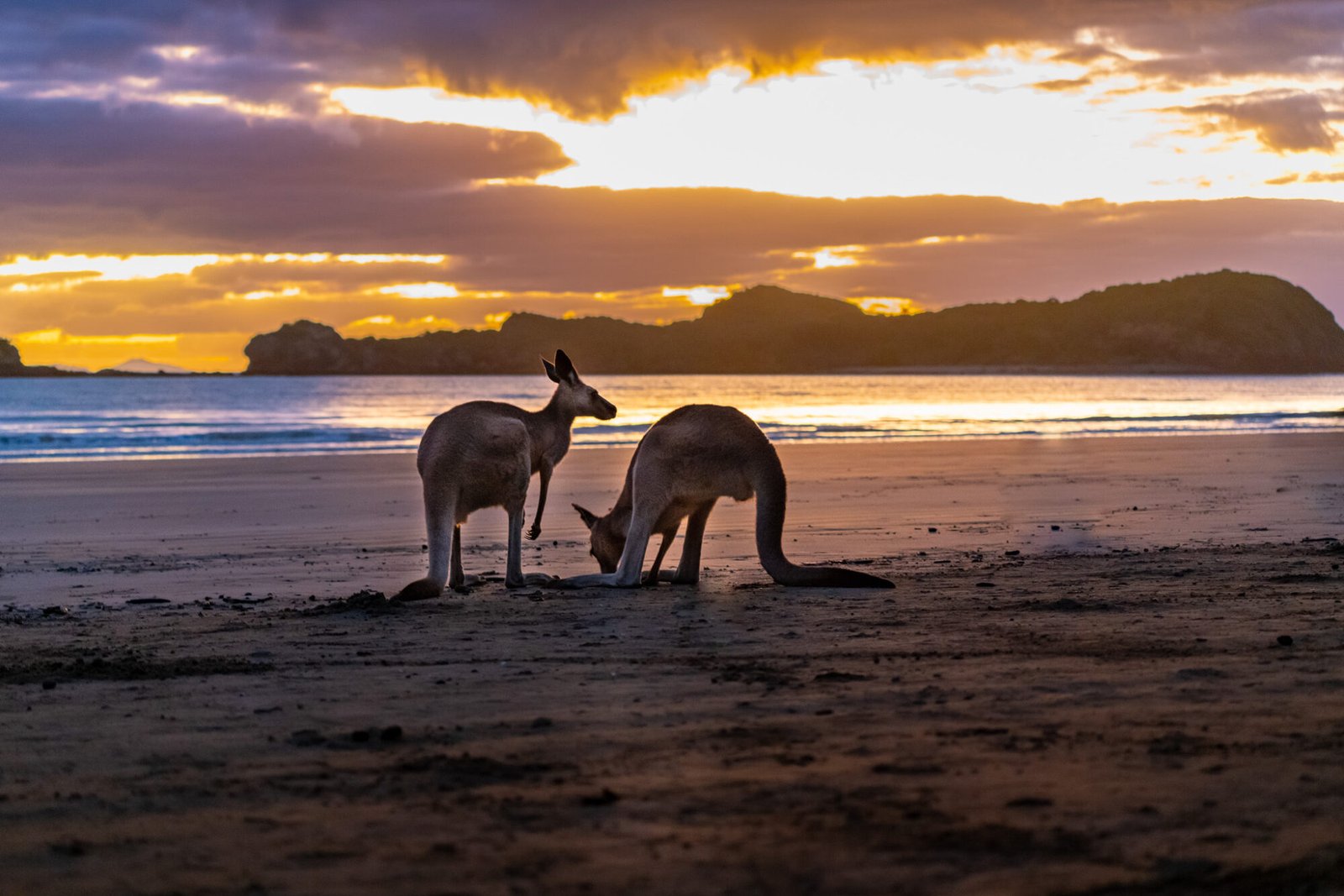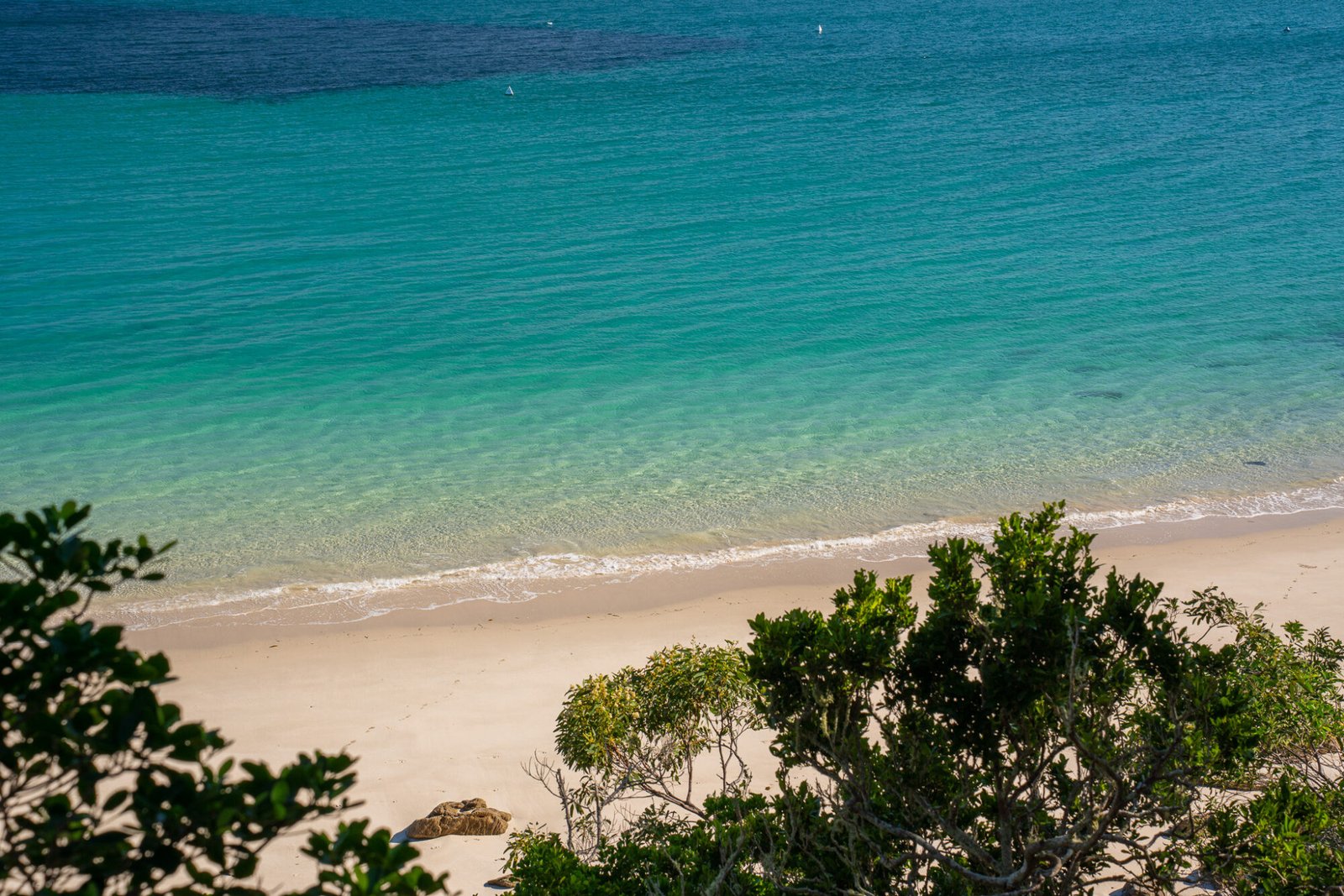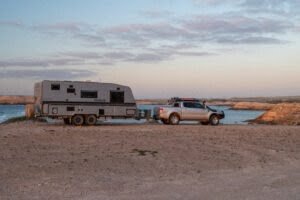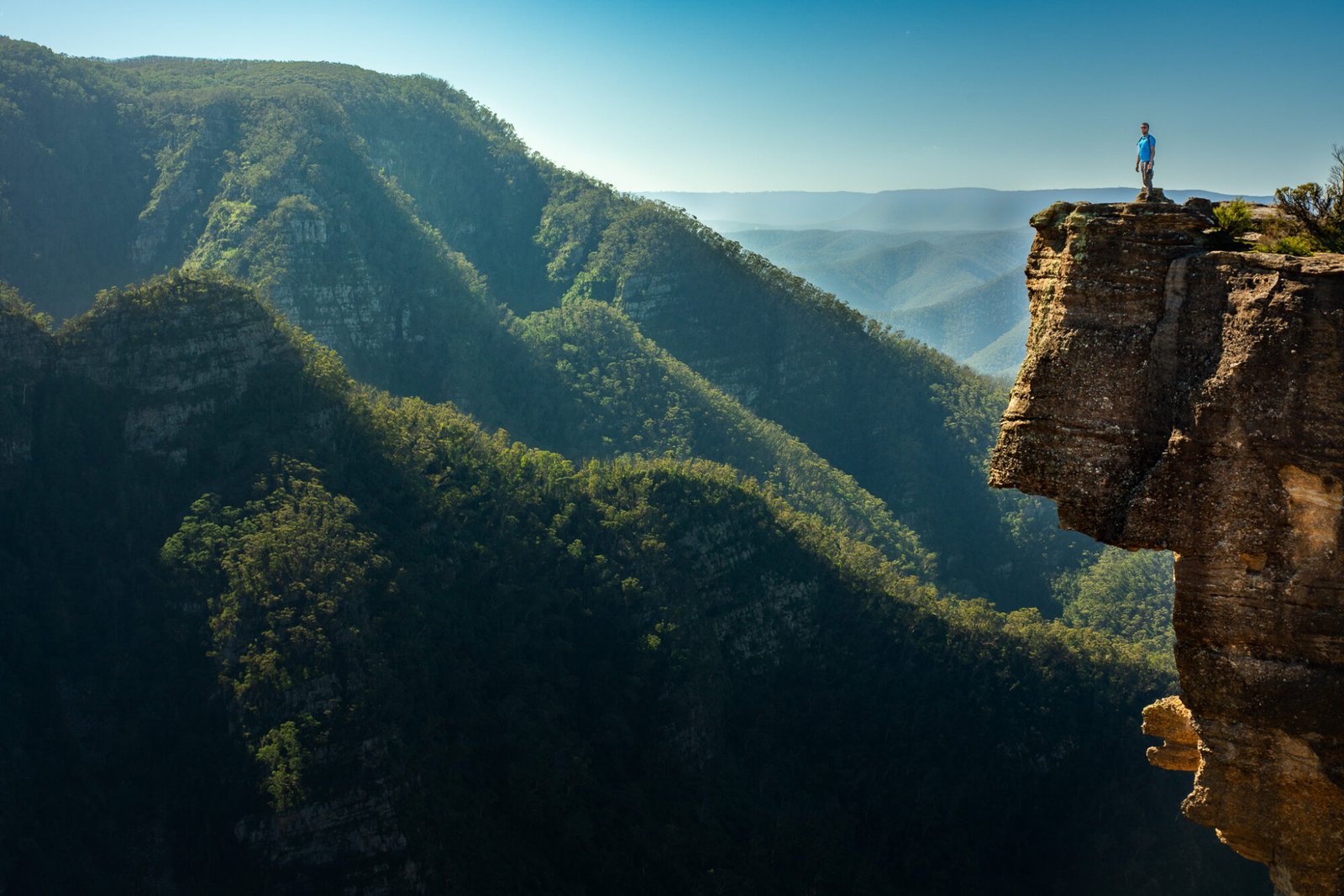If you’re an adventure seeker looking to explore the beauty and culture of Outback Australia, then put Kakadu National Park high on your bucket list. Located in the Top End of Australia, east of Darwin, it is the nation’s largest national park. At approximately 20,000 square kilometres, it is almost half the size of the country of Switzerland! Kakadu is chock-full of natural beauty with a variety of stunning ecosystems, including savanna woodlands, monsoon forests, coastal wetlands, and rocky escarpments. Most special, however, is its deep cultural heritage prevalent throughout from the Bininj/Mungguy people, who have inhabited this land for over 50,000 years.
KAKA-DO OR KAKA-DON’T?
When it comes to this grand national park, people often ask: “Kaka-do or Kaka-don’t?” While permits and access can be a challenge at times, overall a visit to this UNESCO World-Heritage park is well worth the effort as it offers beautiful scenery, close encounters with wildlife, and the opportunity for a meaningful connection with the world’s oldest living culture through rock art, informative signage, and fantastic ranger-guided activities.
As of the start of 2023, a permit costs $40 per adult, $100 for a family, and bookings can be made at https://book.parksaustralia.gov.au/passes/kakadu/. Due to the seasons, not all of the park is accessible year-round; for up-to-date information on what’s accessible at any point in time, head to https://parksaustralia.gov.au/kakadu/access/. For a visit of Kakadu National Park, we recommend a bare minimum of three days; a week would be ideal, and more if you have special permits for places like Koolpin Gorge. You could easily incorporate a visit to Kakadu into a larger road-trip from Darwin to include other popular destinations such as Litchfield National Park, Mary River National Park, Adelaide River and Pine Creek, and Nitmiluk National Park.
SHOULD YOU TAKE THE CARAVAN?
Now to the other debate regarding Kakadu: take the caravan or travel in a tent? Basically, it comes down to your personal preference. We opted to travel with the tent so we could cover distances quicker and be able to stay at cheaper campgrounds more easily accessible without a large van. However, if you don’t want to forgo your creature comforts, Kakadu National Park is definitely caravan-friendly. There are several caravan parks, such as those at Cooinda and Jabiru, and caravan-accessible campgrounds throughout the park accessed by bitumen or well-maintained unpaved roads. It would be easy to use one of these caravan spots as a base from which to explore the park further.
The places we mention below are by no means an exhaustive list of all the spots you can visit in the park; these places are just the ones we visited that we found worth mentioning. Find more detailed information on Kakadu National Park at https://parksaustralia.gov.au/kakadu/
SOUTHERN PARK ENTRANCE
Coming from the southern entry to the park, there are a couple hidden gems that would be very easy to drive by without knowing it. Approximately 6km into the park from the south border, on the left side of the road, is Ikoymarrwa (Molpin Gorge). The lower falls are accessible by a small dirt track while entry to the upper falls are found by a path leading from a small pullover area. Both have nice little swimming areas, usually well away from crowds.
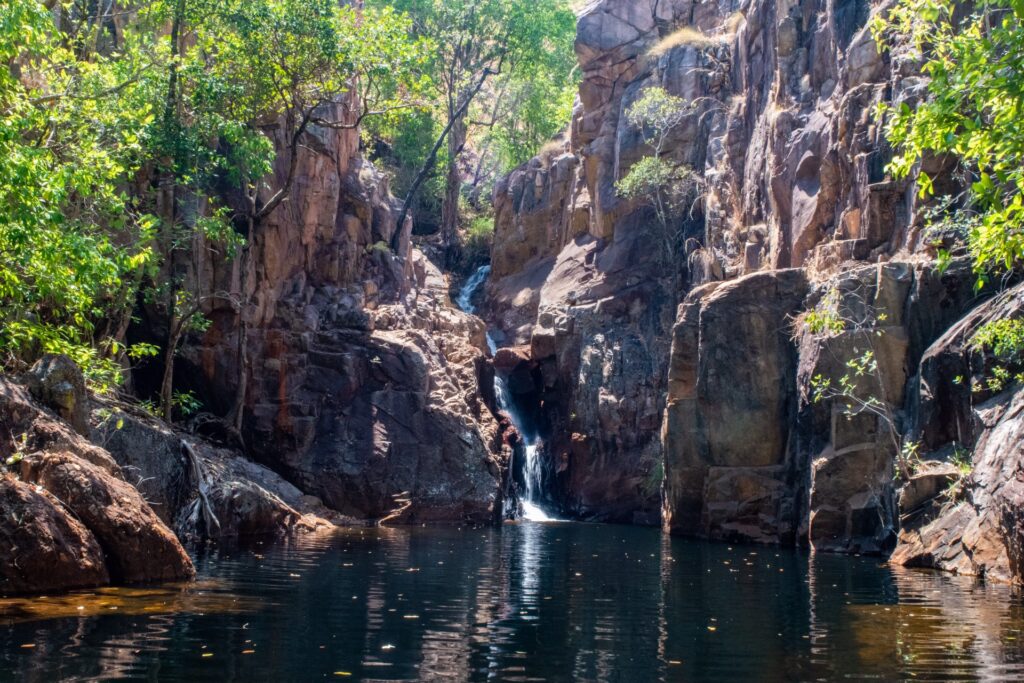
Another little hidden gem is Fern Gully Rockpools, reached via a dirt track to the right, just before the turnoff to Jarrangbarnmi, which offers lovely verdant rockpools, usually with plenty of bird life around.
JARRANGBARNMI (KOOLPIN GORGE)
Jarrangbarnmi is one of the most spectacular spots in Kakadu but probably one of the harder places for a typical tourist to get access to. It requires a separate permit, which are limited in number and tend to get booked out almost as soon as they become available in December. You can find more information on the campground and how to book a permit here (https://parksaustralia.gov.au/kakadu/stay/camping/jarrangbarnmi-campground). This campground does not allow caravans as it is only accessible by 4WD track.
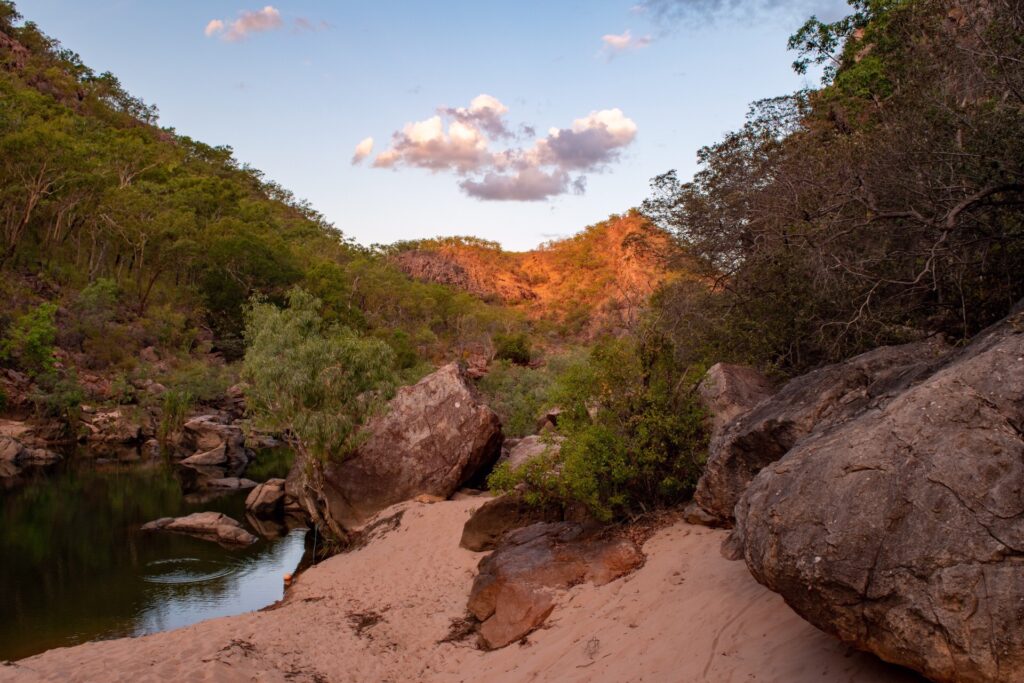
If you’re one of the lucky ones to secure a permit, you are in for an absolute treat. The campground is basic with drop toilets only; you’ll need to be fully self-sufficient for this one. It backs onto a beautiful waterhole which unfortunately is not safe for swimming. Luckily, there are several kilometres of gorge to explore, which can easily take all day, and thanks to the restricted numbers, you’re likely to have spots all to yourself. You can even get an extra permit to allow overnight camping in the gorge itself, which would be pretty amazing.
The walk is challenging and requires a decent level of fitness and experience, as it entails (depending on the time of year) rock-hopping, scrambling, and swimming, with minimal signage the further you get into the gorge. Pay close attention to the signage at the start of this walk; the first pools you come across are not safe for swimming due to crocodiles. We didn’t feel confident to go for a dip until we climbed up to Black Pool, then spent the rest of the day exploring the waterways, enjoying the scenery, even finding some hidden rock art. Tip: a few kilometres into the walk, there is an S-bend in the gorge that then leads to a long, narrow pool. Towards the start of the pool, look to the left under an overhang for rock art which can be seen from the water. Happy exploring!
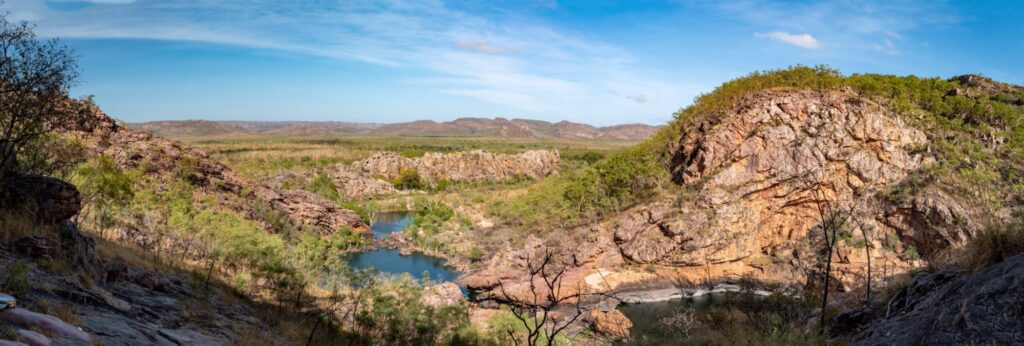
On the way into Jarrangbarnmi from the Kakadu Highway, there is a turnoff to the Yurmikmik Walks. This series of stops includes the popular Motor Car Falls and is particularly remarkable during or just after the wet season as the falls are seasonal. As we were here in the dry season, we did not visit this spot but are keeping it on our list for if (when!) we get to the Top End during a Wet Season.
MAGUK (BARRAMUNDI GORGE)
Maguk is probably our favourite waterhole in Kakadu, and for some reason, it’s not at the top of most people’s must-see destinations for the park. An easy, short (although sometimes very corrugated) 4WD track leads to the campground and a pleasant 1km walking track to an idyllic monsoonal waterhole, with crystal clear water perfect for a cool-off on a hot Top End day. If you want to wander further, there are (unofficially) some upper pools that you could easily spend a good half-day swimming through and lounging around the more private pools.
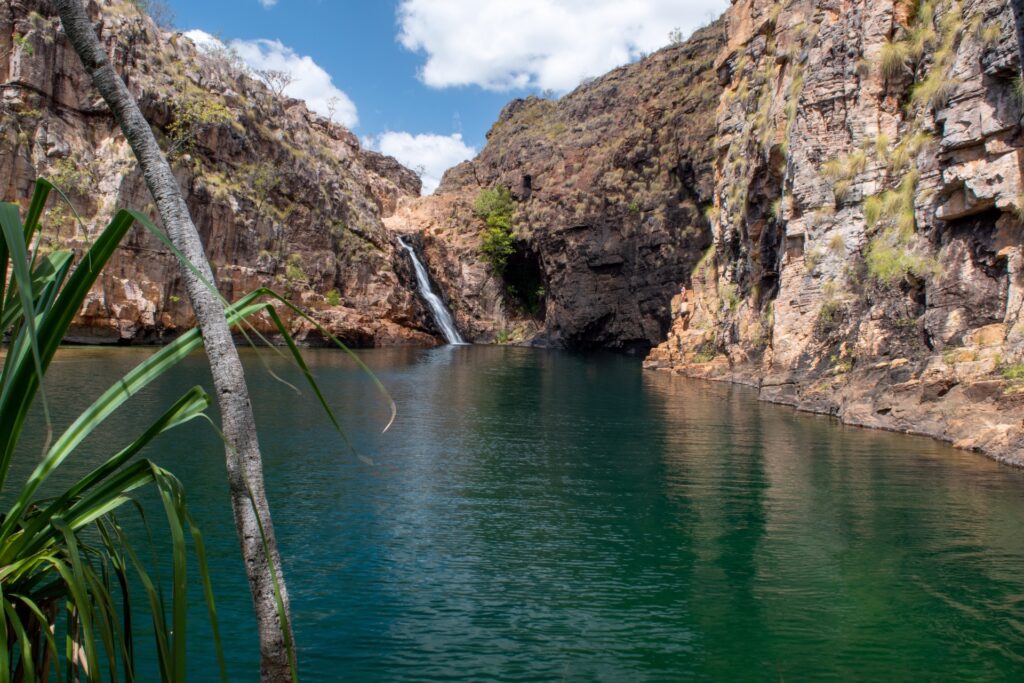
Access is not recommended for caravans; however, depending on the road conditions, you’d likely be fine with an off-road caravan. Check with a ranger for road conditions before attempting.
YELLOW WATER (NGURRUNGURRUDJBA)
A cruise through Yellow Water is for many tourists a highlight of a visit to Kakadu. As we had already done a river cruise through the Mary River, we opted not to do the Yellow Water cruise, but instead walked along the boardwalk and saw a variety of birdlife as well as a python. Unfortunately we didn’t spot any crocs, but they often can be seen floating in the water or sunning themselves on the banks of the river. Private boats can partake of the top-notch fishing found here, particularly for the elusive barramundi.
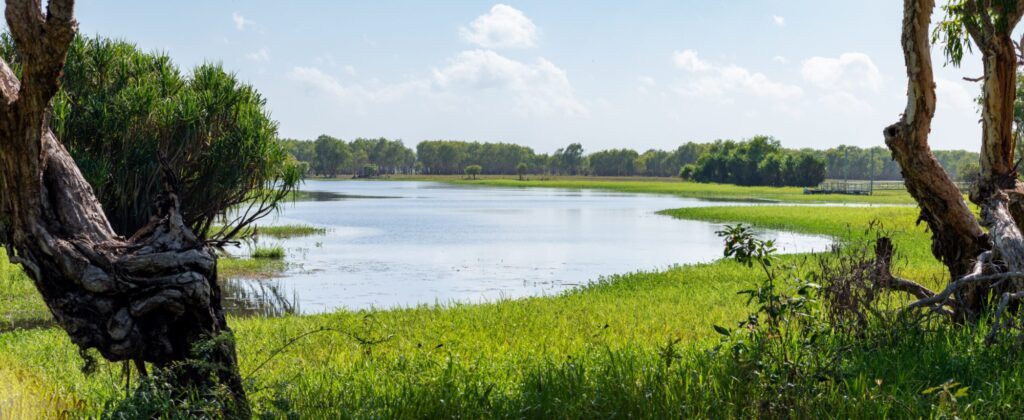
JIM JIM FALLS AND TWIN FALLS
In the heart of Kakadu lies two impressive waterfalls: Jim Jim Falls and Twin Falls. Access is along a 56km unpaved and often corrugated road, so we recommend staying at least one night in the campground to make it worth it. Plus, the walks are fairly strenuous so it would be a challenge to get both done in a day. You will most likely need a 4WD with a snorkel to access these spots; check with rangers beforehand regarding the levels of Jim Jim Creek.
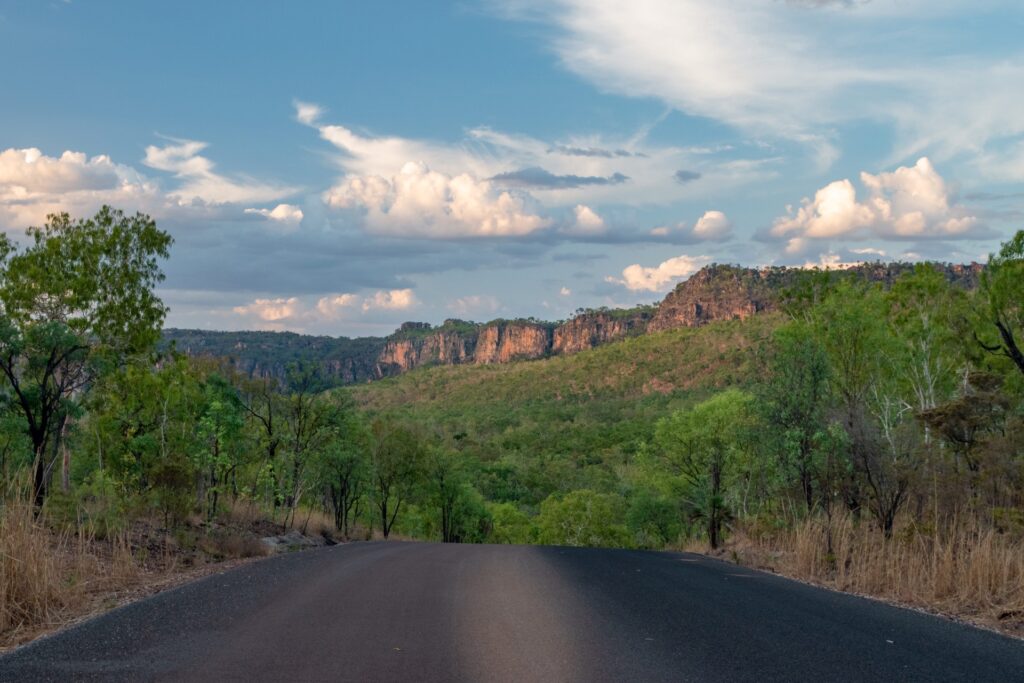
Jim Jim Falls, whose name comes from the Aboriginal word “Andjimdjim” meaning “pandanus” has two walks to enjoy. The Jim Jim Falls plunge pool walk, the easier of the two, is a 2km-return walk over some uneven ground and scrambling over or around large boulders but is not overly strenuous. Here you can enjoy the majestic towering gorge walls from below and go for an enjoyable swim in the cool waters. For the best views though, you’re going to have to work for it! The Jim Jim Falls escarpment walk is very strenuous and involves a steep climb through monsoonal rainforest; it takes about 4-6 hours to complete. Because it is often hot and humid in Kakadu and there’s not a lot of shade at the top, bring lots of drinking water and try to start the walk as early as possible.
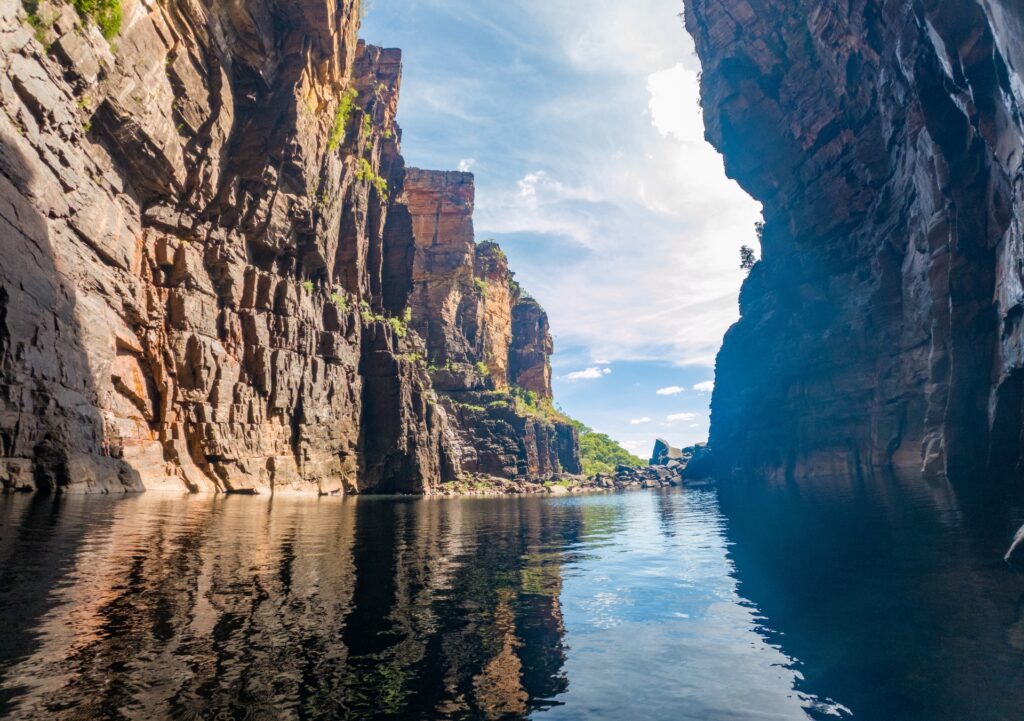
Twin Falls also usually offers two walks, but unfortunately during our visit the track to the bottom of Twin Falls was shut, so only the top was accessible. Similar to the Jim Jim Falls escarpment walk, it is a decent, mostly uphill climb that rewards you with breathtaking views into the gorge below.
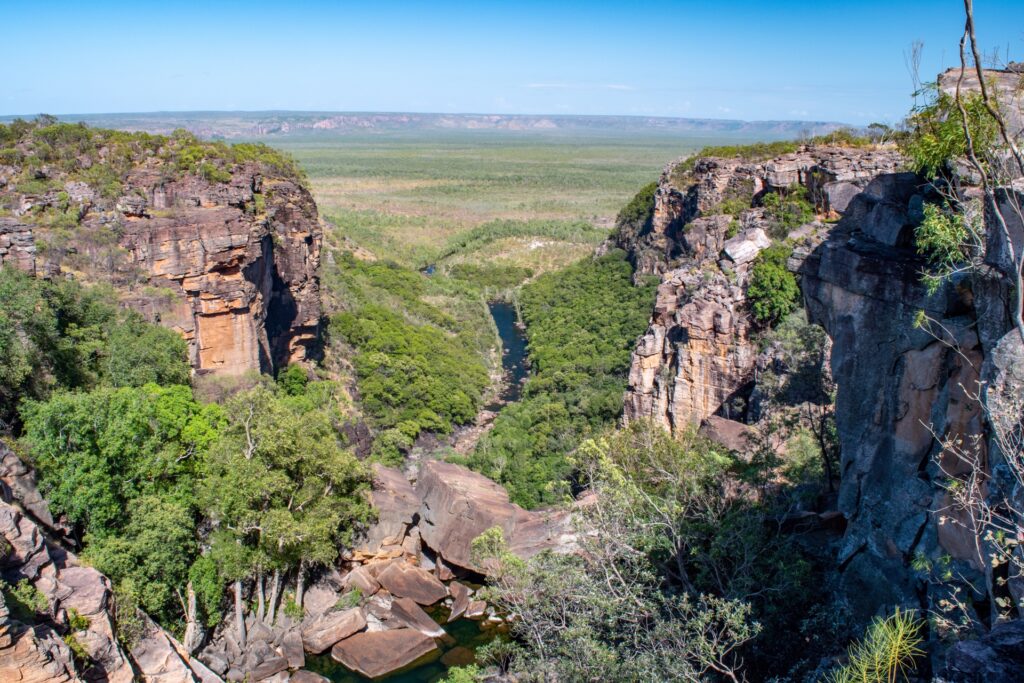
These falls are only accessible by road in the dry season, but wet season visitors can still enjoy the splendour of the falls with a scenic flight — something that is on our bucket list!
SANDY BILLABONG (DJIRRILBA)
Sandy Billabong campground typifies what most people picture of when they think of a campground in Kakadu National Park. A picturesque billabong covered in a blanket of colourful water lilies and teeming with birdlife awaits you here.
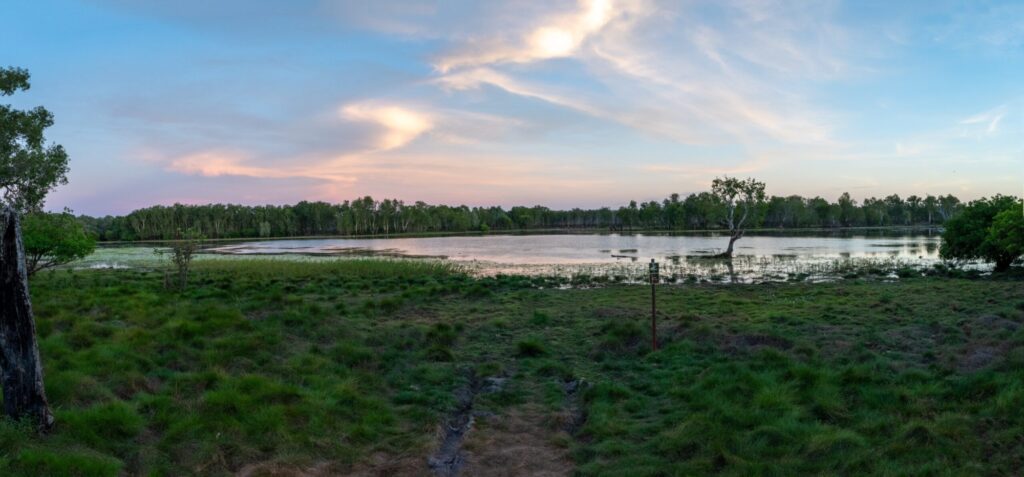
The campground is basic, with only drop toilets for facilities, and is less easily accessible than most the other campgrounds in Kakadu, but that often translates to less crowds. During our stay in the middle of the dry season, we couldn’t see another camper from where we were. Again, we didn’t spot any crocs in the water but they were most certainly there! One word of advice, make sure you have an effective mosquito repellent system; they were downright vicious here.
BURRUNGKUY (NOURLANGIE ROCK)

The large sandstone outcrop of Burrungkuy houses one of the best collections of Aboriginal rock art in Kakadu, and all of Australia for that matter. They estimate some of the art here to be around 20,000 years old. A majority of the art can be accessible via a 1.5km, wheelchair-accessible circuit walk to the Anbangbang shelter. The Nanguluwurr art site, a 3.4km return hike, is also well worth a visit; among the drawings of native animals such a kangaroo and barramundi, you’ll find a painting of a European sailing ship.
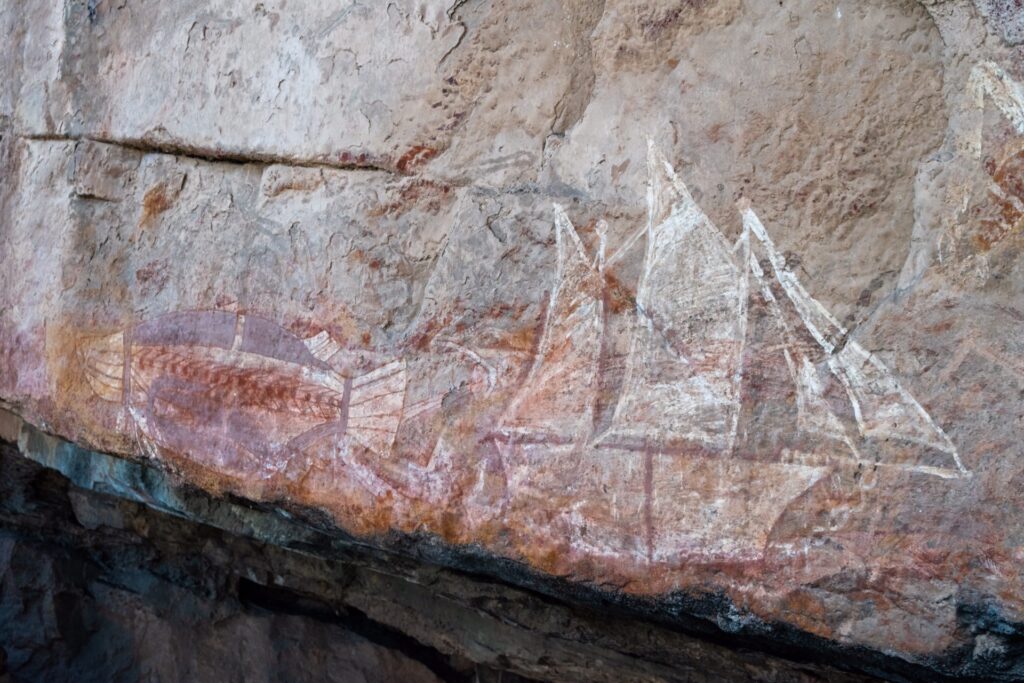
CAHILLS CROSSING
At first glance, Cahills Crossing can seem fairly unassuming. This short, cement-based water crossing goes across a usually low and slow-flowing river. However, this is considered one of the most dangerous river crossings in Australia due to what’s IN the water: Crocodylus Porosus, AKA the estuarine or salt-water crocodile, an apex predator and the world’s largest reptile.
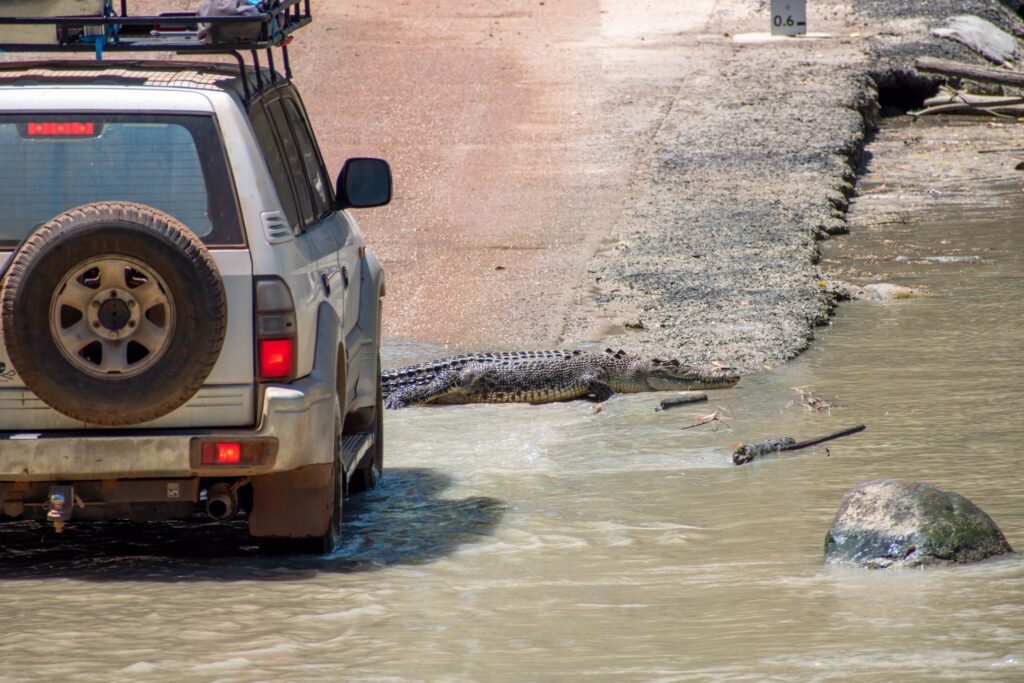
Luckily, you don’t have to brave the crossing to witness these fearsome and impressive creatures; Parks Australia has been kind enough to build a platform that is well out of a crocodile’s reach. Nevertheless, this is one of the most important places to be croc-wise; there have been some unfortunate but mostly preventable croc-related deaths here over the years. Timing is very important though; at high tide we saw well over 20 crocodiles gathered in the waterway, all vying for a tasty barramundi as the fish attempted the treacherous swim upstream, but when we returned a couple hours later, we could not see a single one. You are also much more likely to see crocodiles late dry season as opposed to any other time of year.
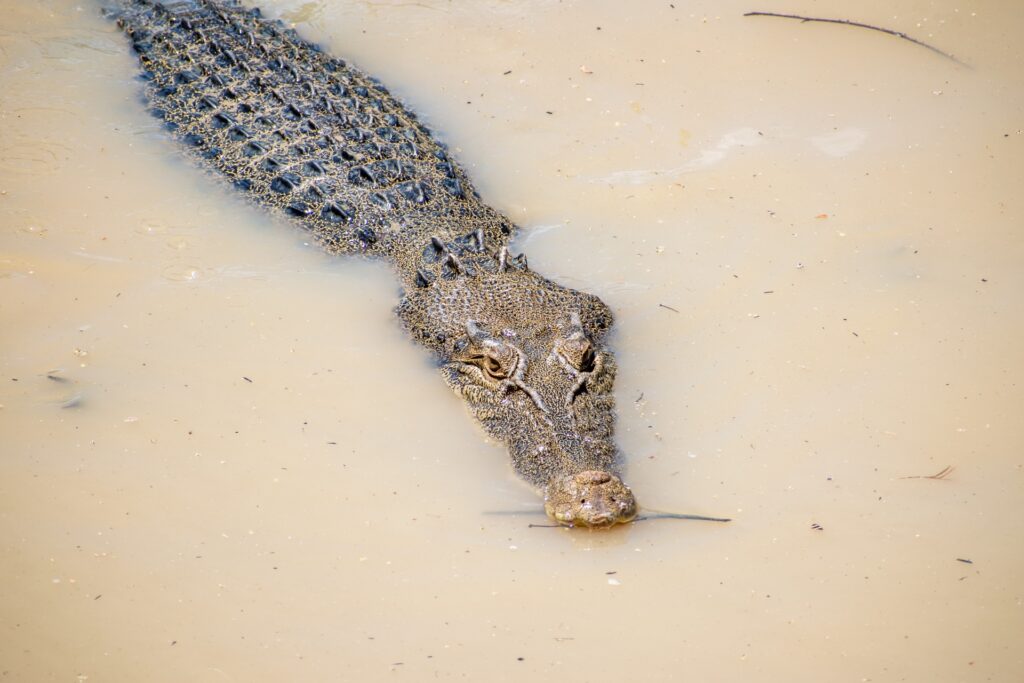
UBIRR
Ubirr was one of our favourite and most memorable stops along our trip through Kakadu. Not only is the scenery some of the best throughout the park, but the rock art here was a big factor in Kakadu receiving UNESCO World-Heritage status. It is a short walk that does involve a bit of an uphill climb to get to the escarpment, but it is entirely worth the effort for the panoramic views that await, especially at sunset, and there is an abundance of rock art to admire throughout the walk, in various styles depicting various themes. The sense of culture feels as if it is reverberating off the rock around you.
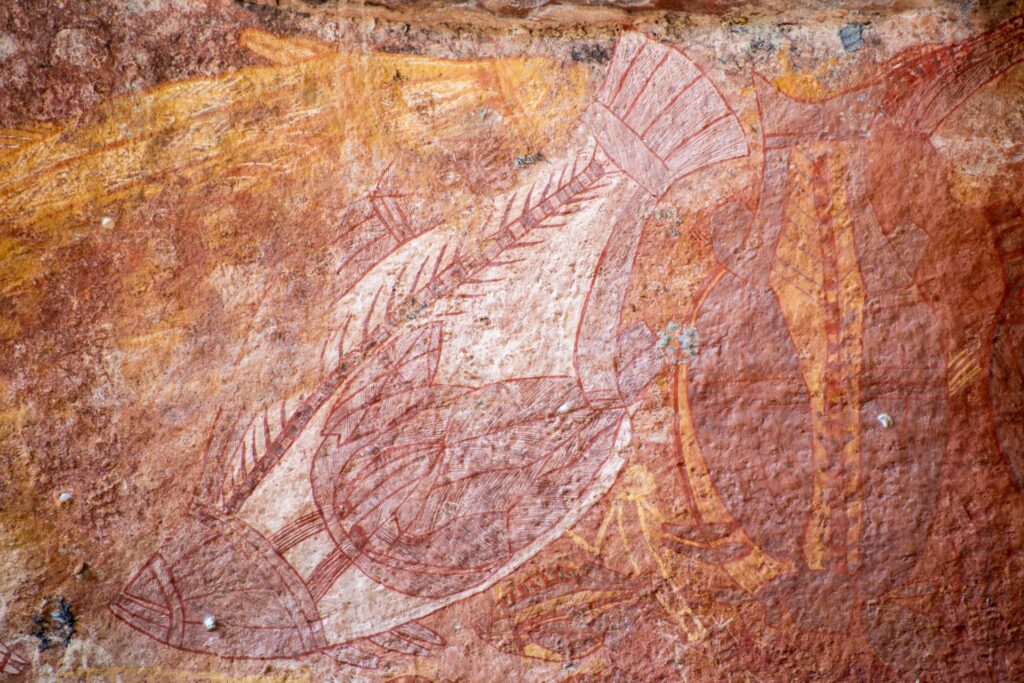
As mentioned previously, Kakadu National Park offers free ranged-guided tours throughout the park during the dry season. Due to timing and availability, this was the only place that we were able to secure a tour, and we cannot recommend a ranger-guided tour through Ubirr highly enough. Our guide was a local Indigenous woman whose family lived on and cared for this land for many generations, and the insight she shared with us into her people’s culture and the significance of Ubirr to them was fascinating and deeply touching.

As you can see, there is plenty to do in Kakadu National Park, and we only scratched the surface. Kakadu was definitely one of the highlights of our time in the Top End. By the end of our stay in September, we had only one more place to tick off the list before we started heading south, one of the only places in the Top End that’s more remote than Kakadu: East Arnhem Land!

